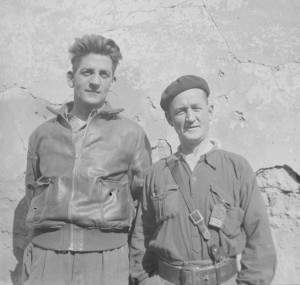Book Review: Irish volunteers in Spain
Barry McLoughlin, Fighting for Republican Spain, 1936-38, Frank Ryan and the Volunteers from Limerick in the International Brigade, Ireland: Barry McLoughlin, 2014. ISBN 978-1-291-96839-2
Fighting for Republican Spain, 1936-38, is a worthy book that adds significantly to the historiography of the International Brigades. McLoughlin’s self-published Fighting for Republican Spain to coincide with a celebration of Limerick volunteers organized by the Limerick International Brigade Memorial Trust [1]. The core of this well-researched work is a regional study of six Limerick volunteers: Frank Ryan, Maurice Emmett Ryan, Jim Woulf, Gerrard Doyle, Patrick Brady, and Joseph Ryan. Of the six: two died in Spain, two were captured by the Nationalists, one was sent home categorized as “useless,” and one was repatriated due to wounds. All six were born in Limerick, but were living in other cities or outside of Ireland when they left for Spain. The book makes extensive use of local source material as well as the International Brigade records from the Moscow Archives. These resources inform both his discussions of the Irish political landscape and the biographical sketches he incorporated for 230 Irish volunteers.
Frank Ryan is the central figure in Fighting for Republican Spain. The first chapters of the book interweave Frank Ryan’s background with an overview of Irish politics in the 1930s. This sets the stage for discussion of the Spanish Civil War including Ryan’s capture during The Retreats. This portion of the book primarily focuses on Ryan within the context of the British Battalion’s service. McLoughlin discusses Ryan’s time as a POW, his post-war transfer from Spanish prison to Germany, and subsequent, sometimes controversial without passing judgment. His approach allows readers to draw their own conclusions.
Two other Limerick volunteers receive multi-page coverage. Jim Woulf, who went to Spain from Canada, was severely wounded by a grenade that ripped off most of his jaw during the vicious house-to-house struggle for Belchite. The coverage of Woulf notes his background, the fatal wound he suffered at Belchite, and the impact his death had on his family in Ireland. Maurice Emmett Ryan also died in Spain. His death was controversial because he was executed by Republican forces, a fact that received little press at the time. McLoughlin devotes an entire chapter to discuss the timeline and events surrounding Ryan’s execution. In the discussion he implies that Ryan’s execution may have resulted more from suspicions aroused by his socioeconomic background than from the reputed charge of firing on his own men while intoxicated. McLoughlin notes that primary and secondary sources on the three remaining Limerick volunteers provide little information. Consequently, the text mentions them only in passing.
American readers will find McLoughlin’s coverage of the voluntary transfer of Irish volunteers from the British Battalion to the American Lincoln Battalion of interest. Twenty-one Irish volunteers voted to transfer after a rancorous meeting with the British Battalion leadership. This controversial exodus took place while Ryan was away from the Battalion. The Irish volunteers formed a section with the addition of Americans of Irish descent and a few of dubious lineage like Milty O’Goldstein. Several of the Irish who transferred advanced to important leadership positions within the Lincoln Battalion. The section ceased to exist after the Brunete campaign due to the high rate of casualties.
McLoughlin’s inclusion of biographical sketches of 230 Irish volunteers in the last two chapters elevates this work’s importance. He analyzes data on Irish volunteers identifying this population as those who were either born or lived for a period in Ireland. Most Irish volunteers went to Spain from other nations: 123 from Britain; 30 from Canada; 12 from USA; and 6 from other countries. Sixty-nine Irish volunteers died in Spain.
[1] During the L-IMBT event, From the Shannon to the Ebro, held in September 2014 a sandstone sculpted memorial to the six volunteers was unveiled at the Limerick City Hall.















[…] Read reviews of Fighting for Republican Spain published in The Limerick Post here and The Volunteer here. […]
[…] in Aragon, this year saw the return of four historians, two from Ireland (Emmet O’Connor and Barry McGloughlin) and two from England (John Halstead and myself), to explore some of the sites around Madrid. Our […]